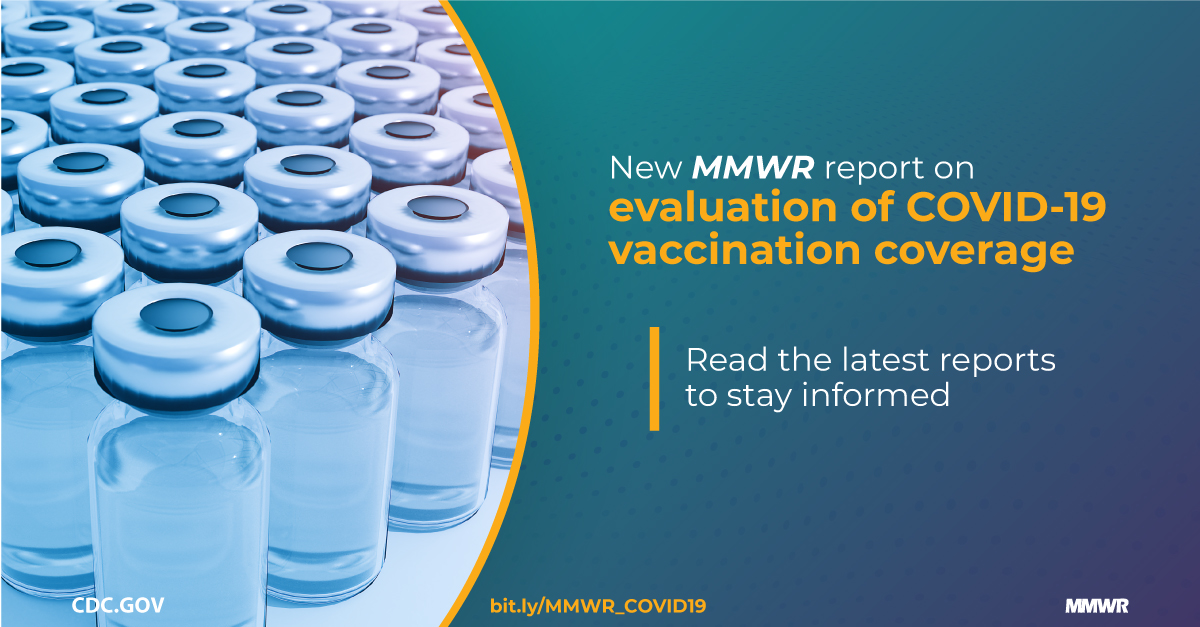You are here
CDC study outlines lower vaccination rates and higher COVID-19 cases in rural counties than urban areas
Primary tabs
 Disparities in COVID-19 Vaccination Coverage Between Urban ... Approximately 60 million persons in the United States live in rural counties, representing almost one fifth (19.3%) of the population. Centers for Disease Control and Prevention
Disparities in COVID-19 Vaccination Coverage Between Urban ... Approximately 60 million persons in the United States live in rural counties, representing almost one fifth (19.3%) of the population. Centers for Disease Control and Prevention Summary
-- Residents of rural communities are at increased risk for severe COVID-19–associated morbidity and mortality. In September 2020, COVID-19 incidence (cases per 100,000 population) in rural counties surpassed that in urban counties.
-- COVID-19 vaccination coverage was lower in rural counties (38.9%) than in urban counties (45.7%); disparities persisted among age groups and by sex.
-- Disparities in COVID-19 vaccination access and coverage between urban and rural communities can hinder progress toward ending the pandemic. Public health practitioners should collaborate with health care providers, pharmacies, employers, faith leaders, and other community partners to identify and address barriers to COVID-19 vaccination in rural areas.
...
Among most U.S. jurisdictions analyzed, COVID-19 vaccination coverage was lower overall, among all age groups, and among men and women in rural compared with urban counties. Coverage among adults aged ≥65 years was higher than among younger adults in both rural and urban areas, likely because of vaccine eligibility criteria that prioritized older adults earlier in the implementation of the vaccination program before vaccination was expanded to other age groups. Notably, vaccination coverage among women in both urban and rural areas was higher than that among men, possibly because of the increased likelihood of women seeking and using preventive care services (6), or women working in sectors that were prioritized for early vaccination, such as health care and education.¶
Because residents of rural communities are at increased risk for severe COVID-19–associated illness and death (2,3), vaccination disparities between urban and rural areas might hinder efforts to reduce morbidity and mortality from COVID-19 nationally. ...
Vaccine hesitancy in rural areas is a major barrier that public health practitioners, health care providers, and local partners need to address to achieve vaccination equity. In March 2021, a poll by the Kaiser Family Foundation found that vaccine hesitancy was highest in rural communities, with 21% of rural residents stating that they would “definitely not” get a vaccine compared with 10% of urban residents.
Among the rural respondents, 45% of younger adults (aged 18–64 years) stated that they would “definitely not” get a vaccine compared with 8% of older adults (aged 60–69 years) (8). Rural residents who reported that they would “definitely not” get a vaccine were more likely to report not having a college degree and earning <$40,000 per year (8). Notably, 86% of rural residents report they trust their own health care providers for information on COVID-19 vaccines, which highlights the importance of public health practitioners working with established outpatient health care systems in rural areas (9). Through its Vaccinate with Confidence initiative, CDC continues to support rural jurisdictions and local partners in their efforts to improve access to, and bolster trust and confidence in, COVID-19 vaccines. ...



Comments
CNN Summary: Slow vaccine rates in rural areas hinder recovery